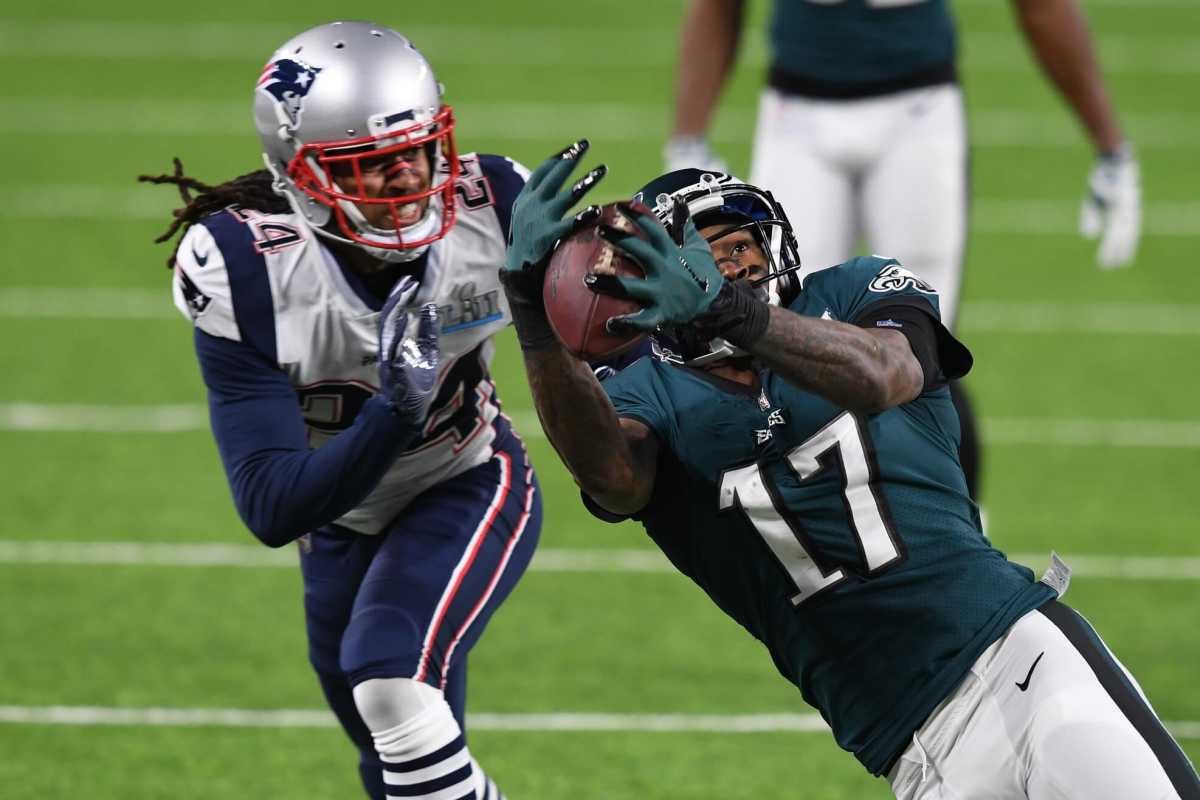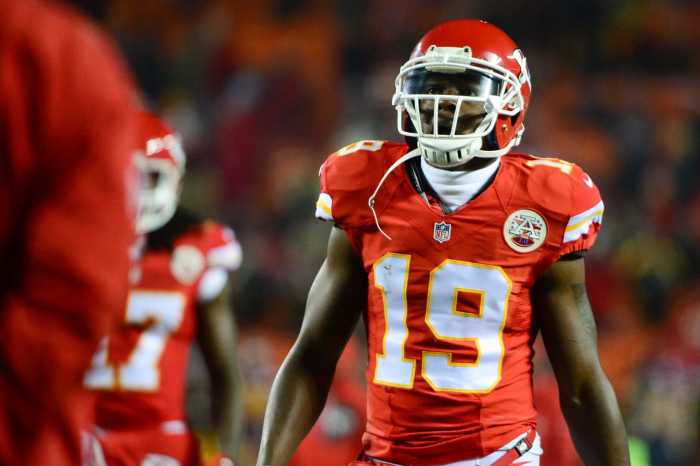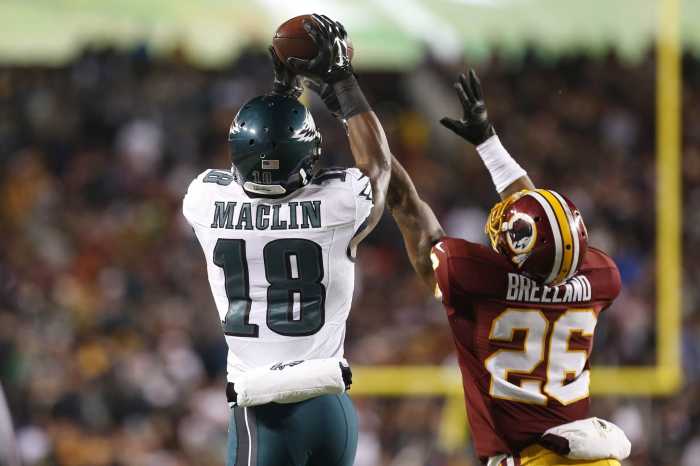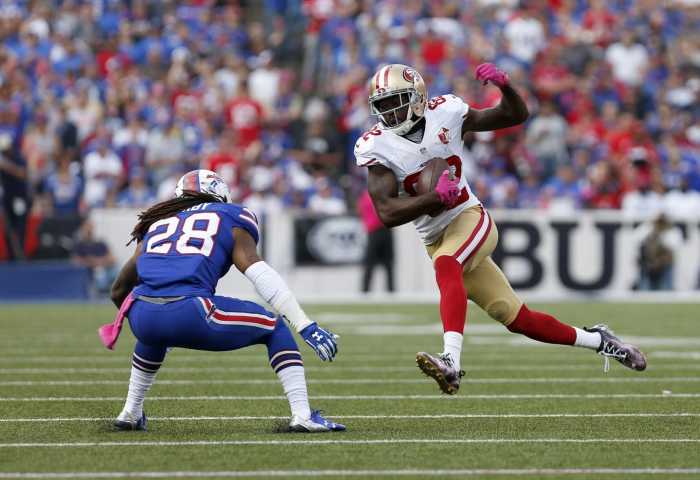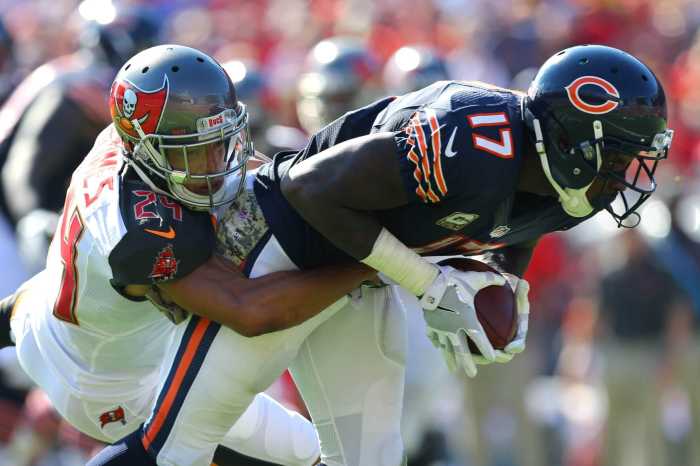The Eagles’ Super Bowl winning season is one that will go down is one as one of the greatest in the City’s sporting history. Before the year began, Howie Roseman made some fundamental acquisitions in order to give his second-year quarterback and Head Coach a realistic chance at winning it all and it’s safe to say he delivered. But just where did the Eagles improve most last season?
It would be easy to point the finger at defense, with the likes of Derek Barnett, Timmy Jernigan and Chris Long all being added to the fortress manned by Jim Schwartz, or a revamped wide receiver corps on the other side of the ball. However the real answer is a little more specific. The Eagles brought in a tonne of offensive weaponry for their shiny new quarterback…but how did they adapt the playbook for such a devastating army?
In 2016, the rookie season of both Carson Wentz and Doug Pederson, the Eagles converted just 37.95% of their third down attempts, ranking them 16th in the NFL. One year later, that number stands at 44.69% and sees them ranking second in the NFL. There is no questioning that this is a dramatic increase in efficiency, but where did it come from?
To find out more, I turned to the ‘The Philadelphia Eagles 2017 Third Down Manual’. A guide written by Bobby Peters that breaks down every play and every concept used in a third down situation.
From this, I was able to establish a group fo the most successful/unsuccessful plays and when they were used.
‘Levels’ concept: Called 10 times (60% conversion rate)
There are so many variations of this concept littered throughout the NFL and with good reason. The idea is that each read will break into his route at a different point, giving a checkdown, first down and home run look every time. Working best against two safety looks, the Eagles finally had the offensive talent to execute this efficiently time and time again.
The flashiest version of this concept has to be this gorgeous touchdown to Agholor. Two routes break in front of the Safety, giving him a split-second decision to make. Does he stick to his man or anticipate the route underneath. That’s all it took for the USC product to put on the afterburners and blaze across his face, taking it to the house in stylish fashion.
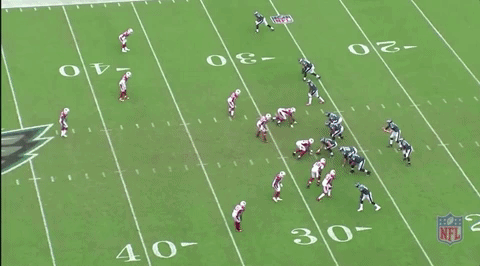
The Levels route is all about trust and timing. With so many threats outside, the Eagles could really catch defenses off guard and keep them guessing…and once again, unpredictability became one of Pederson’s biggest strengths as the year progressed.
Duo/Play action: Called 11 times (55% conversion rate)
The ‘Duo’ concept is easily one of the NFL’s most popular and with good reason. In short yardage situations, the offensive line will pull blocks one way with the intent of a running back landing a one-on-one matchup with a linebacker or corner. The Eagles have one of the best rushing offenses in the league largely due to their athletic prowess up front and last season that was really capitalized on with the additions of LeGarrette Blount (4.4 yards per carry) and Jay Ajayi (5.8 yards per carry).
By outnumbering the defensive line, the Eagles were able to completely decimate their opponents in the trenches and open holes for barreling running backs to roll through, such as this one below against the New York Giants.
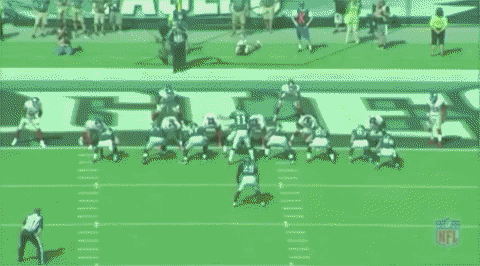
Jason Kelce does a brilliant job of mauling his man and maintaining a wide stance, but the real winners here are Burton and Celek, who part the Red Sea just long enough for Blount to slide through. In 2016, this play simply wouldn’t have happened. The Eagles didn’t have the running back firepower to run the ball successfully in short-yardage situations and the additions of both Blount and Ajayi paid off in a huge way.
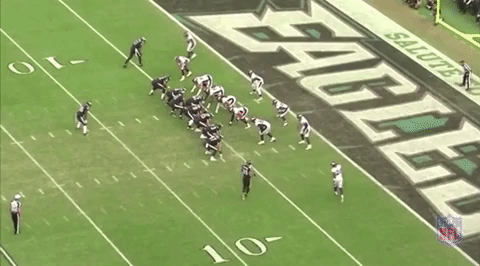
The same applies when the play-action version of this play was executed. The most notable was probably this third down against the Denver Broncos as it resulted in a touchdown which at that point, safely put the nail in the fifty-burger coffin. The Eagles running back potential is so great that the play-action look became one of Pederson’s greatest weapons. The offensive line outnumber Denver once again and by the time they clock on to what happened, red-zone threat Alshon Jeffery had already created separation and cut across the face of his cornerback. Again, something like this wouldn’t have been efficient with such limited wide receiver options in 2016. Dorial Green-Beckham was a failed WR1 red-zone experiment and the Eagles had limited options outside of Jordan Matthews to really make this work.
Both of these plays were frequently called inside the red zone. For context, the Eagles scored on 64% of their red zone drives in 2017, again ranking second in the league and seeing a 15% increase over 2016.
Slot fade: Called 5 times (80% conversion rate)
Used in slightly longer situations, this play is designed to create a big-play opportunity over the middle for the slot receiver. What Doug Pederson does so well is giving his quarterback optionality. Every read progression carries a safety blanket, as we’ll see below.
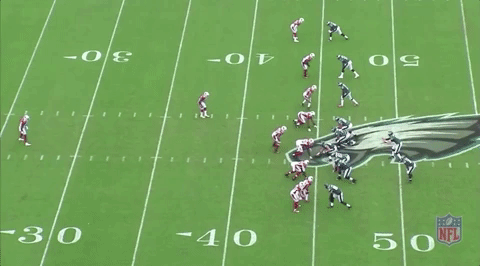
The Cardinals are pressing at the line of scrimmage and the hot-route (Nelson Agholor), really has to bully his way down the route tree in one of the most enticing matchups of the season. By the time Wentz looks back the other way, he has a check down over the top which bares a big hit, or inside leverage with his tight end, Zach Ertz, who was able to push off into separation.
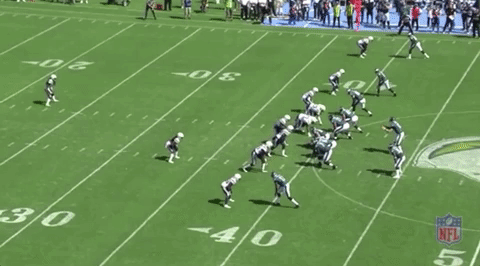
When the slot-fade does work, it’s a burner. Nelson Agholor has a great launch off the line here, throwing himself outside and working his way down the sideline with minimal contact. His route-running really gives Wentz the confidence to let this rip, but again, look at how many options he has available.
H-post: Called 8 times (63% conversion rate)
The beauty of this play is that the Eagles, as Bobby mentioned in his guide, shook it up so much. The primary read is the wideout running the post-route, but with defenses able to key in on the likes of Alshon Jeffery, the Eagles decided to keep things fresh and change the breaks of said route or at least shift the attention. On the play below, Burton motions inside to signify man-coverage which presumably left Wentz licking his lips. Jeffery had a one-on-one post matchup and the quarterback tosses it up knowing fully well his number one receiver has the vertical ability to come down with the football. While all attention is diverted underneath, Wentz reaps the rewards from his biggest receiving threat.
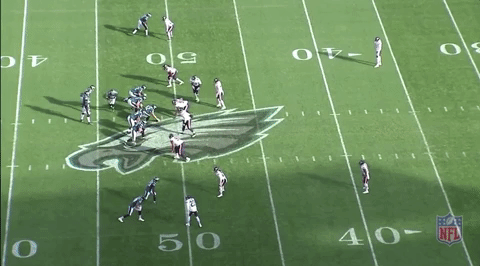
All-Curls: Called 14 times (43% conversion rate)
The All-curl route is a simple concept, but again one the Eagles could only really use efficiently this season. Designed to box-out smaller defenders and create an almost undependable throwing window for the quarterback, the likes of Alshon Jeffery and Zach Ertz really come alive in these lights. Turning their backs on their defenders and opening a window on the opposite side of their body. A perfect example can be seen in week 3 against the Giants, where Alshon cuts in to get as close as possible to the linebacker before throwing him off the scent and adjusting to a pass thrown designed to extend the catch radius.
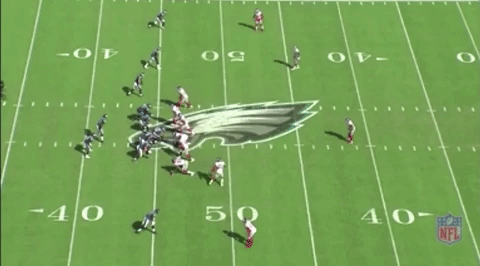
Pederson’s play-calling was heavily scrutinized in his first season as a Head Coach, but a lot of that simply has to be put down to having the blueprint without the materials needed to build the house. After an offseason of acquisitions, Pederson’s offense reached new levels of efficiency and explosiveness. When you factor in the drafting of Dallas Goedert and the signing of speedster Mike Wallace, the fun is only just beginning.
Mandatory Credit: John David Mercer-USA TODAY Sports

